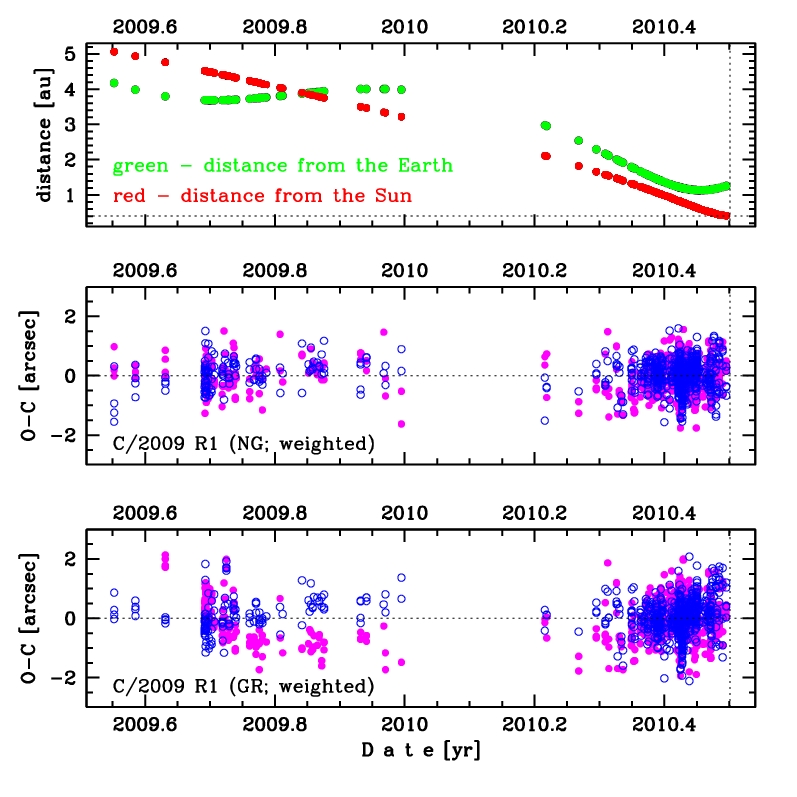| Solar System Dynamics & Planetology Group |
 |
C/2009 R1 McNaught |  |
| Solar System Dynamics & Planetology Group |
 |
C/2009 R1 McNaught |  |

| number of observations | 792 |
| number of residuals | 1501 |
| data interval | 2009 July 20 — 2010 June 29 |
| rms [arcsec] | 0.51 |
| orbit quality class | 1b |
| Epoch (TT) | 20100411.0 | = JD 2455297.5 |
| time of perihelion passage (TT) | 20100702.675680 | ± 0.000232 |
| perihelion distance | 0.40501846 | ± 0.00000260 |
| eccentricity | 1.00035977 | ± 0.00000121 |
| argument of perihelion [deg] | 130.700102 | ± 0.000199 |
| longitude of the ascending node [deg] | 322.622314 | ± 0.000032 |
| inclination [deg] | 77.034327 | ± 0.000192 |
| inverse semimajor axis [10-6 au-1] | -888.27 | ± 2.98 |
| Nongravitational parameters [10-8 au/day2] | A1 = 5.798 ± 0.490 | A2 = -1.418 ± 0.359 | A3 = 0.776 ± 0.208 |
| Epoch (TT) | 17130408 | |
| time of perihelion passage (TT) | 20100701.169302 | ± 0.000278 |
| perihelion distance | 0.39442252 | ± 0.00000159 |
| eccentricity | 0.99999520 | ± 0.00000130 |
| argument of perihelion [deg] | 131.134477 | ± 0.000137 |
| longitude of the ascending node [deg] | 322.671047 | ± 0.000036 |
| inclination [deg] | 77.008392 | ± 0.000137 |
| inverse semimajor axis [10-6 au-1] | 12.16 | ± 3.29 |
| Epoch (TT) | 23090802 | |
| time of perihelion passage (TT) | 20100703.078964 | ± 0.002045 |
| perihelion distance | 0.40705236 | ± 0.00002438 |
| eccentricity | 0.99993062 | ± 0.00008029 |
| argument of perihelion [deg] | 130.727483 | ± 0.001900 |
| longitude of the ascending node [deg] | 322.607146 | ± 0.000130 |
| inclination [deg] | 77.010035 | ± 0.000107 |
| inverse semimajor axis [10-6 au-1] | 170.43 | ± 197.26 |